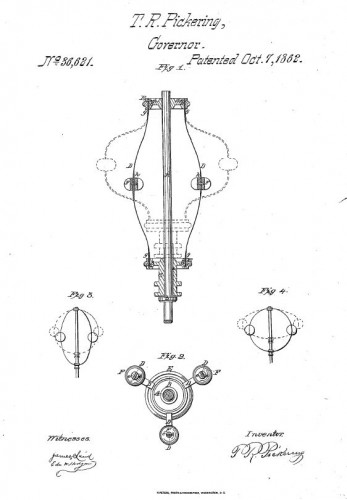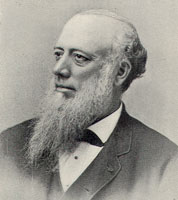Thomas R. Pickering, an engineer, ran a factory power plant in the mid-1800s. Frustrated by the lack of precision with which existing technology allowed him to control the speed of the plant’s engine, Pickering longed for a more finely crafted mechanism than the sluggish, unresponsive “gravity governor” responsible for the engine’s control. Pickering set about making his own governor in which revolving balls acted against curved flat springs; the result was his 1861 “Pickering governor” and the birth of the Pickering Governor Company in Portland, Connecticut.
The Pickering governor caught on quickly in a 19th-century world increasingly dependent upon the steam engine. Pickering’s invention, incorporated into the valve assemblies of steam engines, helped operators produce more consistent and steady speeds. The product’s popularity brought about tremendous growth in Pickering’s enterprise. By 1904, the company had already outgrown its facilities and moved into a new E-shaped mill in town with elevators, a shipping room, warehouse, machine shop, and fireproof doors. Pickering Governor continued its growth as the company patented modification after modification to meet the demands of the bigger and more powerful gasoline engines gaining popularity at the time.
Despite its growth and success, the Pickering Governor Company remained very much a close-knit, small-town operation. At the start of the 20th century, with the opportunity to move to Hartford and share a building with the Colt’s Patent Fire Arms Manufacturing Company, the Pickering Company declined, in part because of the number of employees with homes in Portland and the hardship relocation would create for them and their families. The employees, in turn, remained very loyal to the company. In 1940, the Hartford Courant ran a story on Wilmore Taylor, a 64-year-old assembler at Pickering who began his career there at age 14 painting governors by hand. Seven years later, when company President Irving M. Crafts resigned, S. Milton Whitby, a man with 32 years experience at Pickering, took over the company’s operation.
Unfortunately, as technological advances in industry bypassed the need for Pickering’s products, the company began to struggle. In October of 1949, the Hartford-Empire Company purchased Pickering, largely to acquire the property on which the company operated. Hartford-Empire quickly sold Pickering to the Champlain Company, Inc., of Bloomfield, New Jersey. The Standard Knapp division of Hartford-Empire moved into the governor manufacturer’s old 33,500-square-foot facility on Pickering Street, ending Pickering’s almost 100-year-old association with Portland.









